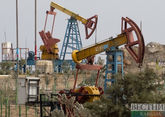S&P Global Ratings revised its oil prices forecast for the coming years, director of corporate ratings for S&P Global Ratings Alexander Gryaznov said.
"We revised our short-term forecast, and you are the first to know that we expect the price of $65 per barrel in 2019, and $60 per barrel in 2020," he said at the annual S&P Global-2018 conference in Almaty. "Our long-term forecast was maintained at $55 per barrel," Gryaznov told Interfax.
For the remainder of this year, S&P forecasts a price of $70 per barrel.
The high price of oil is determined by OPEC actions, which reduced production, the Venezuela and Mexico problems, as well as the growth of annual world oil consumption by 1.3-1.6 million barrels per day, the director of corporate ratings for S&P Global Ratings noted.
The expert named other factors affecting prices, such as increased oil production in the US and a low increase in investment by the largest mining companies, which increase their dividend payout to shareholders.
Today, oil prices declined after US President Donald Trump announced a new round of tariffs on China.
A senior analyst of 'Uralsib', Alexei Kokin, speaking to Vestnik Kavkaza, noted that S&P's forecast is based on expecting when the factors that are currently holding back global oil production will come to naught. "In particular, we are talking about a temporary problem existing in the US oil sector, because of transport restrictions. It is expected to end by late 2019, which will result in further growth of the supply from the US. Perhaps, they are waiting for the world economy to slow down and, as a consequence, the increasing demand for oil," he said.
"In terms of the evolution of global oil demand, two years is quite a long period, during which there was an increase in demand of almost 3 million barrels per day, which required new production. It was superimposed on the problem that the market without sufficient investment eventually becomes more scarce. Therefore, one needs to keep in mind that in order to reduce prices, you cannot just pretend that we have the level of world consumption the same as it was at the time of the OPEC+ agreement at the end of 2016," Alexei Kokin stressed.
"It is also important how the Iranian crisis will be resolved, which is likely to emerge in the fourth quarter of this year because of new sanctions, as well as when U.S. producers will be able to extract to the maximum," a senior analyst of 'UralSib' said.
A leading analyst of the National Energy Security Fund, a lecturer at the Financial University under the Government of the Russian Federation, Igor Yushkov, in turn, the main reason for the decline in oil prices in the two-year perspective was the increase in U.S. production. "In terms of daily production, the Americans came out on top in the world due to continued growth in shale oil production, and in the future it will push prices down. There is a superimposition of two factors in the U.S.: first, the more expensive oil is, the more they oil extract, second, investments in offshore projects made before 2014 are entering the market, which further increases production in the U.S. This is the main factor on which S&P forecasts are based: an overabundance of oil will cause lower prices," he said.
The second factor is the slowdown of the Chinese economy. "It will mean a decline in demand for oil. But in fact, there can be some" black swans." First of all, conflicts in the Middle East," Igor Yushkov pointed out, adding that the S&P scenario is pessimistic, while we should expect prices to remain at a comfortable level of $75 per barrel.










